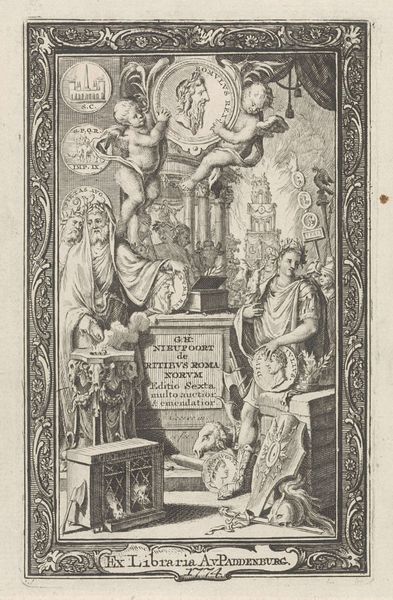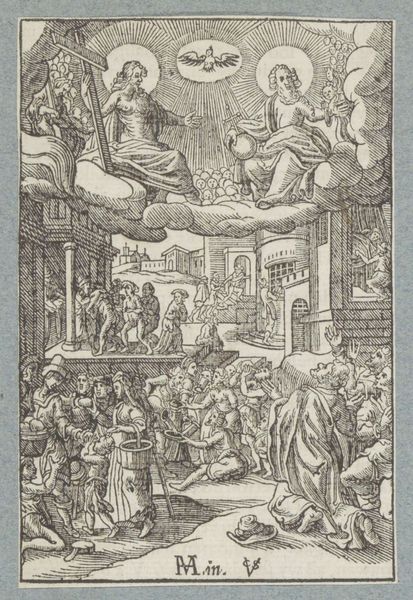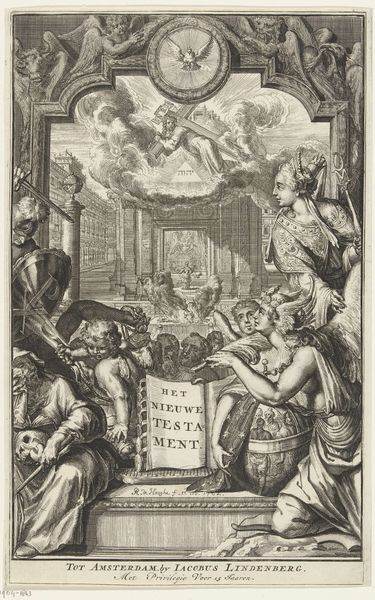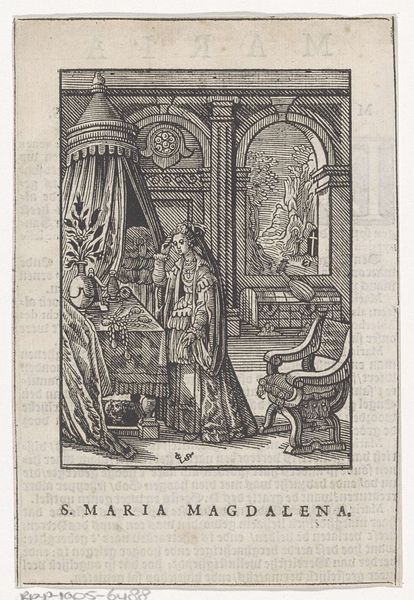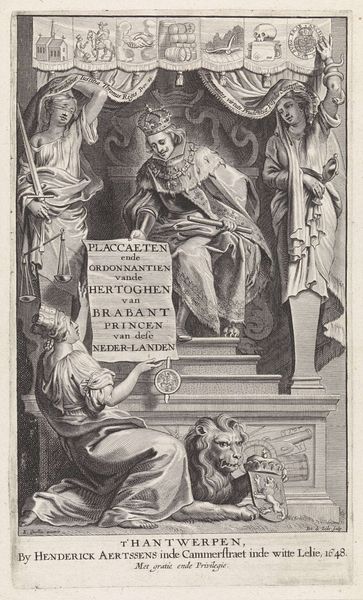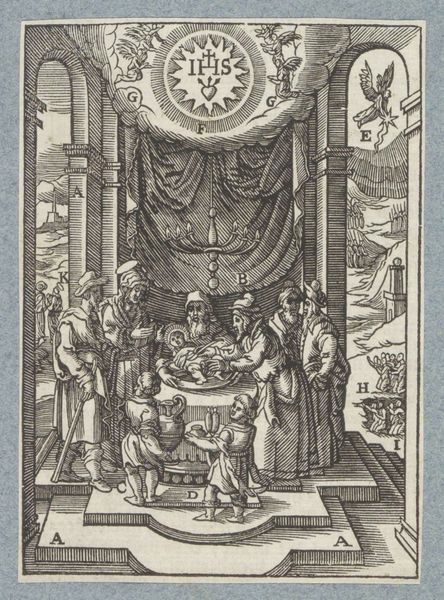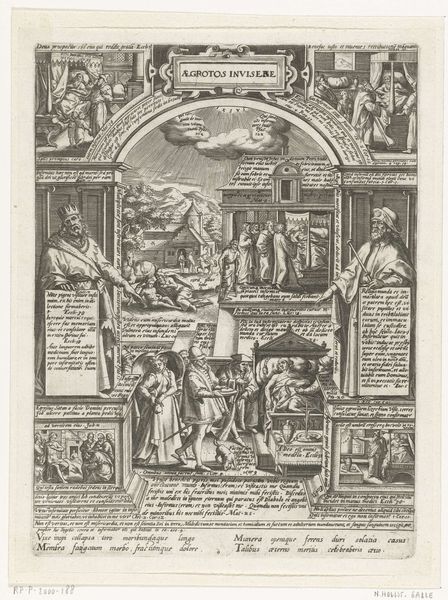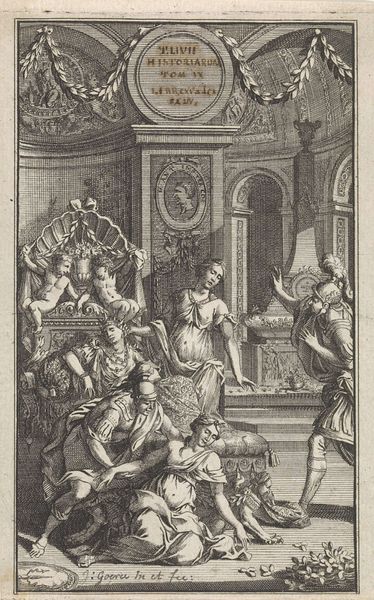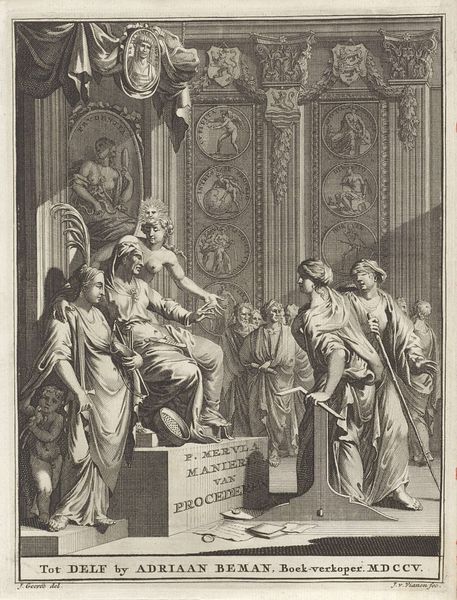
print, engraving
#
baroque
# print
#
pen illustration
#
pen sketch
#
old engraving style
#
figuration
#
ancient-mediterranean
#
history-painting
#
engraving
Dimensions: height 133 mm, width 81 mm
Copyright: Rijks Museum: Open Domain
Curator: We're looking at "Figuren uit de Romeinse oudheid," an engraving by Jan Goeree dating from around 1712 to 1747. It’s held here at the Rijksmuseum. The print style is certainly Baroque, and there’s such intricate detail, particularly when considering the artist employed the engraving technique. Editor: My initial impression is one of calculated reverence. The artist really loaded this piece up with Roman imagery. The density of figures and symbols makes it feel less like an artwork and more like a declaration. Curator: Precisely! The layered effect really speaks to the Baroque era. Jan Goeree created this to accompany a book about Roman customs, G.H. Nieupoort's "Ritibus Romanorum," a work examining ancient Roman rituals and religious practices. Think of this not as just a decorative element, but as a visual interpretation intended to enhance understanding and legitimize knowledge within the burgeoning world of scholarship. Editor: That makes a lot of sense when you consider the individual components. I'm particularly drawn to the placement of the portraits – Romulus and others framed and almost presented to the viewer by those playful cherubs. They become symbols not just of power, but of history being actively curated, legitimized even. What do you make of the cage near the base of the picture, there to the lower left? Curator: Intriguing question! To me, that object appears as a symbolic nod to the keeping or control of knowledge, almost an early statement regarding intellectual property or perhaps to something that is observed and kept behind ‘bars’ – ancient animal sacrifices! What are your thoughts? Editor: Yes, I appreciate the animal symbolism of sacrifice that permeates through ancient histories, religious practices and customs. But look closely! There appears to be writing above it. The imagery itself has great density, from emblems of Roman leaders and pagan gods to symbolic animals and ritual items, all meant to be read, considered, and placed within the overarching Roman narrative, giving visual weight to Nieupoort's scholarly text. Curator: This piece really encapsulates how the visual arts in the early 18th century engaged with historical material. Editor: A fitting observation that really allows us to observe the legacy of Roman antiquity with Baroque extravagance.
Comments
No comments
Be the first to comment and join the conversation on the ultimate creative platform.
